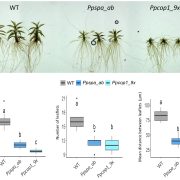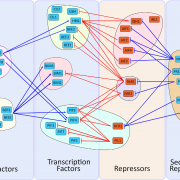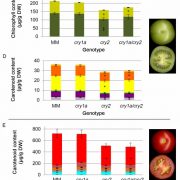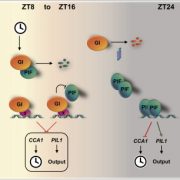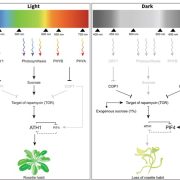Root-expressed phytochrome B1 and B2 regulate shoot growth in nature (Plant Cell Environ.)
 Light is not only a driving force of photosynthesis, but also an important environmental signal. Oh et al. report that a number of light sensing phytochromes are expressed in roots of native tobacco (N. attenuata) at higher levels than in the shoots. The authors investigated the roles of those root phytochromes by grafting light-blind roots with light-sensitive scions. The plants with roots lacking phytochrome B1 and B2 showed delayed elongation of the hypocotyl under controlled and field conditions. Interestingly, this effect was dependent on the temperature. The authors suggest that the root-specific phytochromes serve to sense aboveground light and temperature, and affect aboveground plant growth through root-to-shoot signaling. How the light-sensing roots affect plant’s fitness remains to be determined. (Summary by Magdalena Julkowska) Plant Cell Environ. 10.1111/pce.13341
Light is not only a driving force of photosynthesis, but also an important environmental signal. Oh et al. report that a number of light sensing phytochromes are expressed in roots of native tobacco (N. attenuata) at higher levels than in the shoots. The authors investigated the roles of those root phytochromes by grafting light-blind roots with light-sensitive scions. The plants with roots lacking phytochrome B1 and B2 showed delayed elongation of the hypocotyl under controlled and field conditions. Interestingly, this effect was dependent on the temperature. The authors suggest that the root-specific phytochromes serve to sense aboveground light and temperature, and affect aboveground plant growth through root-to-shoot signaling. How the light-sensing roots affect plant’s fitness remains to be determined. (Summary by Magdalena Julkowska) Plant Cell Environ. 10.1111/pce.13341
[altmetric doi=”10.1111/pce.13341″ details=”right” float=”right”]



